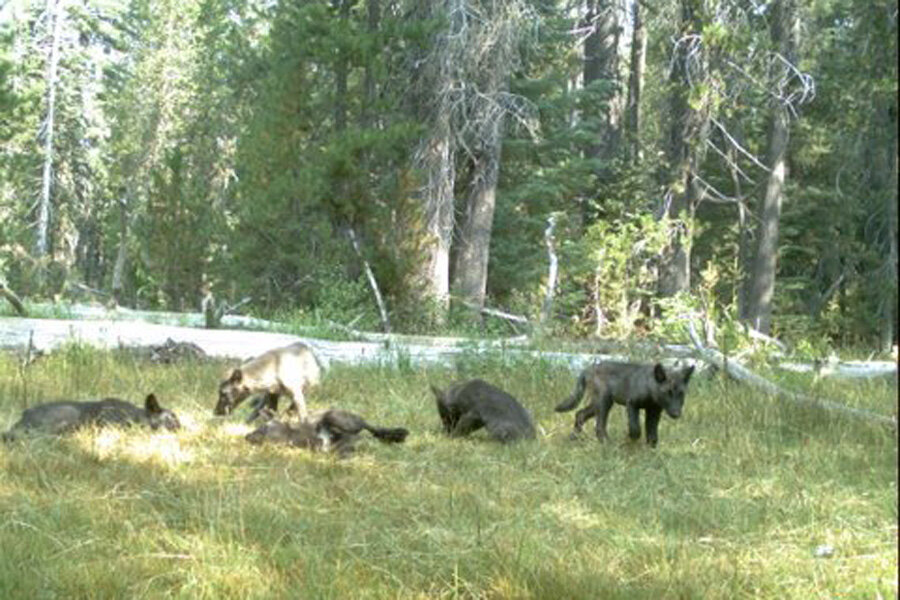Officials: Gray wolves have returned to Northern California
A gray wolf pack was spotted in Northern California for the first time in decades, a sign of a comeback for this protected animal.
Earlier this month a remote camera captured photos of two adults and five pups in southeastern Siskiyou County, California Department of Fish and Wildlife (CDFW) announced last week.
“This news is exciting for California,” said Charlton H. Bonham, CDFW Director. “We knew wolves would eventually return home to the state and it appears now is the time.”
The wolf pack was named the Shasta pack for nearby Mount Shasta.
Previously there has been some evidence that suggested at least one wolf was in the area.
In early May an image of a large, dark-colored, lone canid was captured by remote cameras. In early June some large canid tracks were spotted in Siskiyou County, and in July images were captured of a large, dark-colored canid.
Understanding where these wolves have come from will require DNA testing, but Karen Kovacs of the California Department of Fish and Wildlife told the Associated Press that it is likely that they are a continuation of the increasing numbers of wolves migrating from Oregon's northeastern corner to the southern Cascade Range.
Gray wolves historically inhabited California, but they disappeared from the state in 1924, according CDFW. The last known native wolf was killed in 1924 in neighboring Lassen County, the Associated Press says.
The Shasta pack was discovered four years after the well known male Oregon wolf “OR7” first entered Northern California after traveling hundreds of miles. Born in 2009, OR7 later went back to Oregon where now he has a mate and is part of a pack.
The Shasta pack has been spotted by local ranchers and as Kirk Wilbur, government affairs director for the California Stockmens Association told the Associated Press, ranchers are worried about the wolves attacking their herds. According to Kovacs, so far there have been no reports of wolf attacks on livestock.
Gray wolves are protected in California as endangered species under both federal Endangered Species Act and the California Endangered Species Act, which makes it illegal to harm gray wolves.
But there are concerns that the wolves could fall victim to hunters as hunting season begins in Siskiyou County.
Previously some light-colored wolves have been killed by shooters who say they mistook the animals for coyotes, but Kovacs told the Los Angeles Times that such confusion will not be possible with gray wolves. “It’s going to be pretty hard to look at a black wolf and conclude it’s a coyote.”






